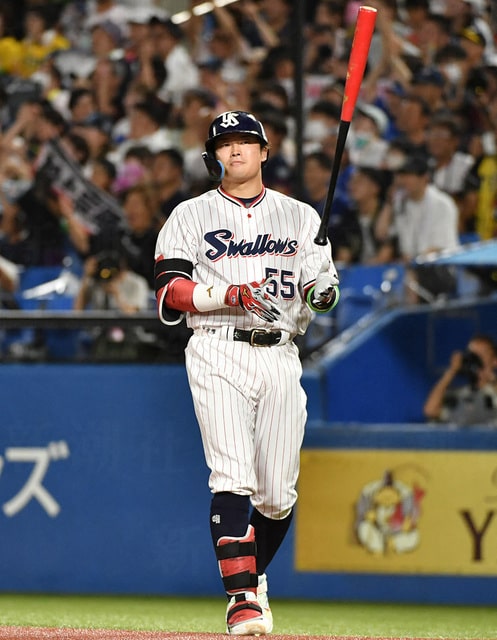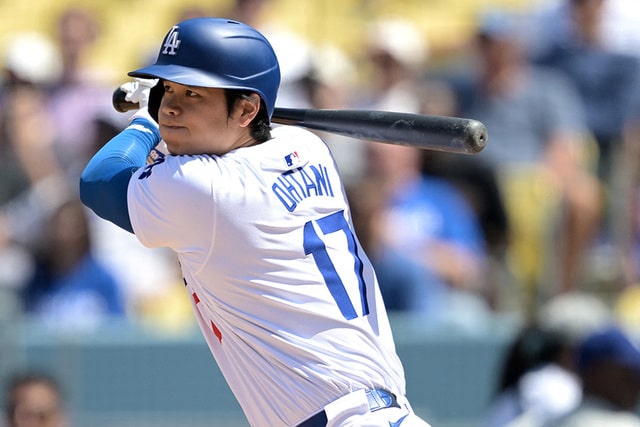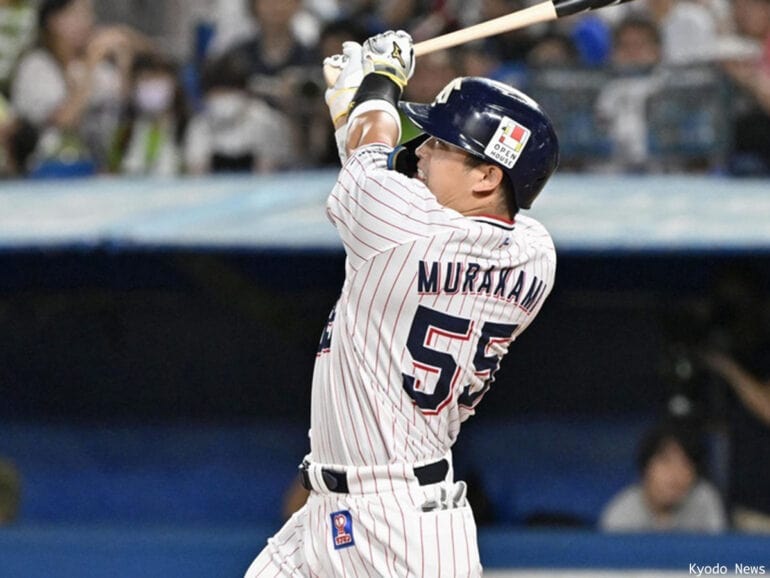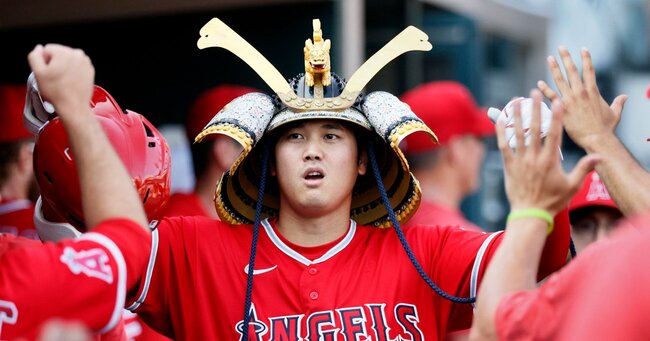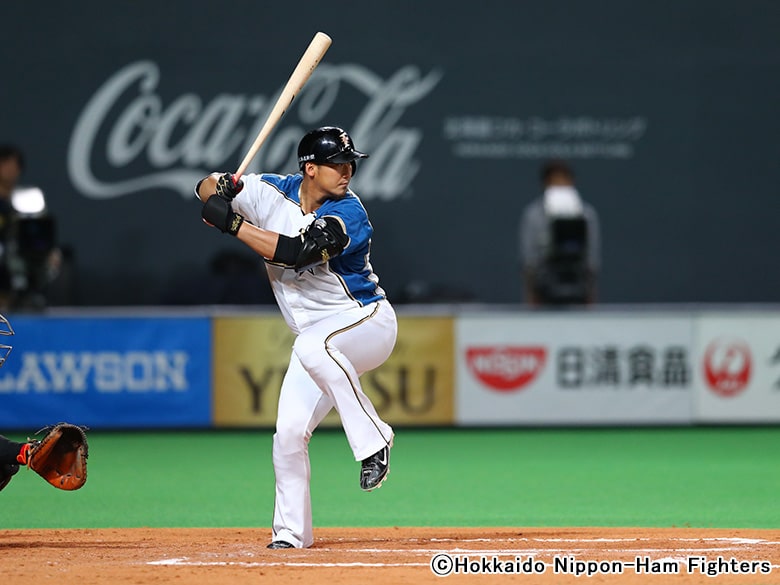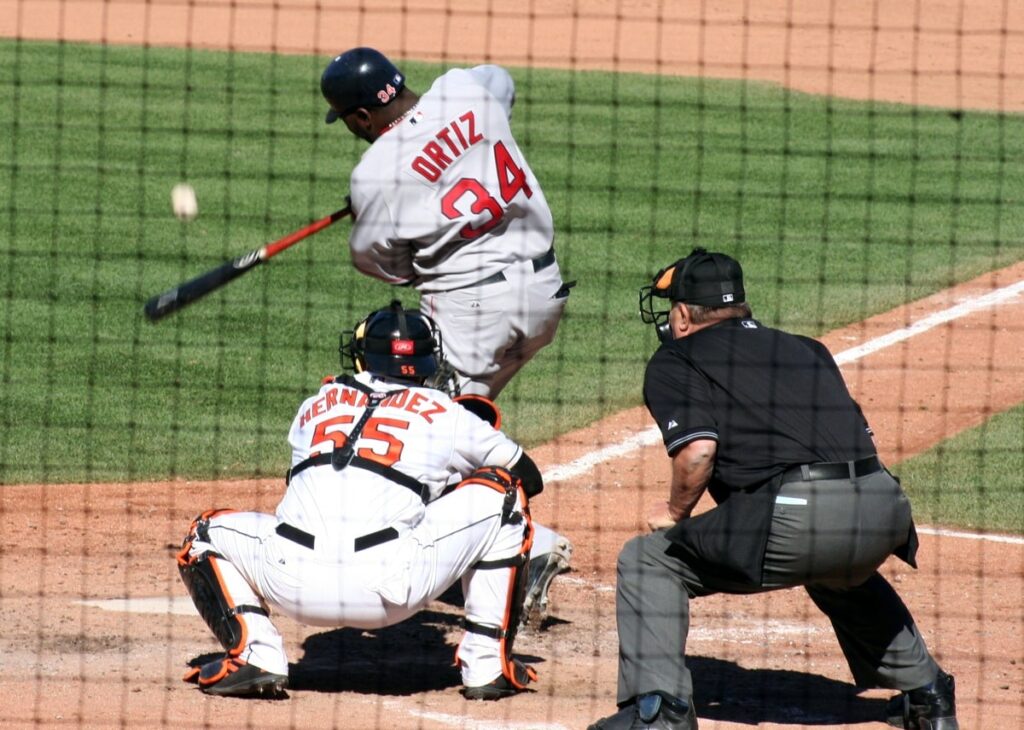
Japanese professional baseball has a long history, and many dramatic events have unfolded along with its development.
In this article, we will look at how professional baseball was formed from its inception to the present day, and the changes it has gone through to become what it is today.
It will also cover the background to the formation of the Central League and Pacific League, as well as the founding of each team and historical events.
Additionally, we will delve deeper into team relocations and name changes, the introduction and impact of the Japan Series and Climax Series, and the relationship between teams and fans.
We hope that through this article you will gain a deeper understanding of the rich history of Japanese professional baseball and the many factors that have underpinned it.
Let’s start by looking at the birth and early history of professional baseball.
目次
- 1 The Birth of Professional Baseball and Its Early History
- 2 The Establishment of the Central League and Its History
- 3 The Establishment of the Pacific League and its History
- 4 Founding and evolution of each team
- 5 History of team relocations and name changes
- 6 History of the Japan Series and Climax Series
- 7 Relationship between the club and the fans
The Birth of Professional Baseball and Its Early History
Japanese professional baseball was founded in 1936 and had a major impact on the Japanese sports world thereafter.
To understand the early history of professional baseball, it is important to know the background to its origins, the early teams, and the process of its development from before the war to the post-war reconstruction period.
The Birth of Professional Baseball: Japan’s First Professional Baseball League
Japanese professional baseball officially began in 1936 with the founding of the Japan Professional Baseball League.
The founding of this federation was inspired by Major League Baseball in the United States and marked a major step in spreading professional baseball in Japan.
When it was first established, teams such as the Tokyo Giants (now the Yomiuri Giants) and the Osaka Tigers (now the Hanshin Tigers) joined the association, laying the foundation for professional baseball.
The Tokyo Giants toured the United States in 1934 and played against star players such as Babe Ruth and Lou Gehrig, which sparked momentum for the establishment of professional baseball in Japan.
This expedition had a major impact on Japanese baseball and played a key role in paving the way for the establishment of professional baseball.
Although early professional baseball leagues had few games and low player salaries, they gradually grew in popularity and attracted many fans.
Between 1936 and 1937, competition within the league intensified and the development of professional baseball accelerated.
Professional baseball from before the war to the postwar reconstruction period
Professional baseball continued to grow in the harsh prewar social conditions. When World War II broke out,
Many players enlisted in the military and league activities were suspended for a time.
However, during the post-war reconstruction period, professional baseball resumed its activities once again and became an important form of entertainment that supported the hearts of the Japanese people.
After the war, professional baseball was established in 1949 as the Nippon Professional Baseball Organization (NPB), with two leagues, the Central League and the Pacific League, being created.
The introduction of this two-league system enabled professional baseball to be run more organized and stable, and intensified competition between the leagues.
In the 1950s, many famous players emerged and the popularity of professional baseball soared.
In particular, the achievements of star players such as Shigeo Nagashima and Sadaharu Oh of the Yomiuri Giants captivated many fans.
This made professional baseball a central part of Japan’s sports culture, and its popularity spread throughout the country through television broadcasts and media coverage.
In addition, professional baseball developed along with the postwar economic growth, and each team began to focus on improving their stadiums and developing players.
This has allowed professional baseball to pursue even more advanced technology and tactics, and has improved its international competitiveness.
summary
The birth of professional baseball and its early history occupy a very important place in Japanese sports culture.
Since its founding in 1936, professional baseball has continued to develop through the prewar and postwar reconstruction periods, overcoming many difficulties.
By understanding this history, you can appreciate the appeal of today’s professional baseball and the effort and passion behind it.

The Establishment of the Central League and Its History
The Central League (CSL) is a particularly important league in Japanese professional baseball.
It was established in 1950 and has supported professional baseball in Japan ever since.
This section provides detailed information about the background to the founding of the Central League, its early teams, and the ongoing rivalry between the Giants and Hanshin.
Background of the Establishment of the Central League and Its Early Teams
In 1950, after going through the post-war turmoil, Japanese professional baseball was reorganized and split into two leagues, the Central League and the Pacific League.
The background to the establishment of the Central League was the growing popularity of baseball after the war and the need for organized management.
This reorganization allowed Japanese professional baseball to evolve into a more structured and competitive league.
When the Central League was first established, teams included the Yomiuri Giants, Hanshin Tigers, Chunichi Dragons, Hiroshima Carp, Yokohama BayStars (then known as the Taiyo Whales), and Tokyo Yakult Swallows (then known as the JNR Swallows).
Each of these teams has its own unique history and characteristics, and has contributed to the development of the Central League.
The Yomiuri Giants were a strong team even before the war, and continued to maintain their strength even after the war.
In particular, during their golden age from the 1950s to the 1960s, the team won many championships and was a leading force in Japanese professional baseball.
The Hanshin Tigers have also established themselves as a strong team, supported by passionate fans.
The other teams also enjoyed enduring popularity in their respective regions, helping to increase the competitiveness of the Central League as a whole.
Giants vs Hanshin Rivalry: A Classic Match
The rivalry that attracts the most attention in the Central League is between the Yomiuri Giants and the Hanshin Tigers.
The match between these two teams is known as the “traditional match” and is supported by many fans.
This match is more than just a game; it is also a venue for the passion of regions and fans to collide.
The rivalry between the Giants and the Hanshin Tigers has continued since before the war, and the competition has intensified especially since the postwar reorganization of professional baseball.
While the Giants are based in Tokyo and enjoy nationwide popularity, the Hanshin Tigers are based in Osaka and enjoy overwhelming support in the Kansai region.
This regional aspect also makes the match between the two teams special.
In particular, matches between the 1950s and 1960s produced many memorable scenes.
For example, in the 1964 season, Shigeo Nagashima of the Giants and Minoru Murayama of the Hanshin Tigers faced off in a heated pitching battle.
Also, 1985 was the season in which Hanshin won the Japanese championship, and there were many dramatic games, including one against the Giants.
In this way, matches between the Giants and Hanshin have always attracted attention throughout the history of the Central League.
For the fans, every match is a special event and the stadium erupts in enthusiastic cheering.
This rivalry contributes to the development of the Central League as a whole and increases the appeal of professional baseball.
The establishment of the Central League and its history have played a very important role in the development of Japanese professional baseball.
By understanding the background to the founding of the Central League, its early teams, and the rivalry between the Giants and Hanshin, you will be able to fully appreciate the appeal of professional baseball and its deep history.

The Establishment of the Pacific League and its History
The Pacific League (PA League) was established in 1950 along with the Central League and plays an important role in Japanese professional baseball.
Let’s take a closer look at the background to the founding of the Pacific League, its early teams, and the growth of emerging teams.
Background of the Pacific League’s Establishment and Early Teams
The year 1950 marked a major turning point for postwar Japanese professional baseball.
As the economy recovered, the popularity of sports increased, and there was a demand for organized management of professional baseball.
As part of this trend, two leagues were established: the Central League and the Pacific League.
The establishment of the Pacific League was an important step towards making professional baseball more competitive and gaining nationwide popularity.
When the Pacific League was first established, its members were the Nishitetsu Lions (now the Saitama Seibu Lions), Nankai Hawks (now the Fukuoka SoftBank Hawks), Toei Flyers (now the Hokkaido Nippon-Ham Fighters), Mainichi Orions (now the Chiba Lotte Marines), Daiei Stars, and Kintetsu Pearls (later the Osaka Kintetsu Buffaloes).
These teams enjoyed strong support in their respective regions and contributed to the development of the Pacific League.
When the Pacific League was first established, it was considered less popular than the Central League, but it still gained many enthusiastic fans and built the foundation of the league.
In particular, the Nankai Hawks and Nishitetsu Lions were known as strong teams and played many memorable games.
Emerging teams and the growth of the Pacific League
The Pacific League has undergone many changes since its inception and has grown since then.
In particular, the addition of new teams, team relocations, and name changes have greatly contributed to the development of the league.
Since the 1980s, the Pacific League has actively introduced new initiatives.
In 1988, the Orix Braves and the Hankyu Braves merged to form the Orix Braves (later the Orix BlueWave).
This merger was an important step in making the Pacific League more competitive.
In 2004, the Osaka Kintetsu Buffaloes and the Orix BlueWave merged to form the Orix Buffaloes.
This merger also contributed greatly to the growth of the Pacific League, as the creation of new teams improved the league’s overall competitiveness and increased fan interest.
Furthermore, in 2005, the Hokkaido Nippon-Ham Fighters were born, bringing a breath of fresh air to the area with Hokkaido as its home base.
The move to Hokkaido was a huge success and garnered support from fans.
The growth of these emerging teams is making a significant contribution to the development of the Pacific League as a whole.
The Pacific League has always introduced new initiatives to increase the league’s appeal.
For example, the introduction of the Climax Series and each team’s community-based management policy helped gain fan support and increased the league’s popularity.
summary
The history of the Pacific League is one of challenge and growth.
Overcoming difficulties at the beginning, and through the addition of new teams and the relocation of teams, the Pacific League has developed into an important part of Japanese professional baseball.
Going forward, the Pacific League will no doubt continue to try new things and increase its appeal.

Founding and evolution of each team
The history of Japanese professional baseball is marked by the founding of each team and their subsequent changes.
In particular, three teams – the Yomiuri Giants, the Hanshin Tigers, and the Fukuoka SoftBank Hawks – have led Japanese professional baseball throughout their history.
In this article, we will take a closer look at the background to the founding of each team and their subsequent evolution.
Yomiuri Giants: Icon of Japanese Professional Baseball
The Yomiuri Giants are a symbol of Japanese professional baseball.
Founded in 1934, it is one of the oldest professional baseball teams in Japan.
The Giants were founded by Matsutaro Shoriki, the founder of the Yomiuri Shimbun newspaper, and have played a leading role in Japanese professional baseball since its inception.
The Giants won numerous titles from before the war to after the war, and especially during their golden age from the 1950s to the 1970s, they had star players such as Shigeo Nagashima and Sadaharu Oh, attracting many fans.
The Giants’ strength comes from their financial power and excellent scouting.
In particular, Oh Sadaharu’s home run record is a major achievement that will be etched in the history of Japanese professional baseball.
The Giants also have a high number of victories in the Japan Series and have an enormous influence in the professional baseball world.
The Giants, whose home stadium is the Tokyo Dome, have attracted much attention from both within Japan and overseas and have established themselves as a symbol of professional baseball.
Hanshin Tigers: A history of tradition and enthusiasm
The Hanshin Tigers were founded in 1935 and are the second oldest professional baseball team after the Giants.
It was founded by Hanshin Electric Railway and was based in Osaka.
As a team with deep roots in the local community, the Hanshin Tigers have been supported by many enthusiastic fans.
The history of the Hanshin Tigers has been woven with many famous players.
In particular, players such as Minoru Murayama, Masayuki Kakefu, and Bass are strongly remembered by fans.
Also, in 1985, there was a dramatic scene in which Bass, Kakebu, and Okada hit three home runs into the back screen, and Hanshin’s victory that year as the team won the Japan Series is an unforgettable event for Hanshin fans.
Hanshin, whose home stadium is Koshien Stadium, is known for its traditions and enthusiastic cheering culture.
Games at Koshien always draw large crowds and are filled with excitement.
This cheering culture is one of the attractions of Japanese professional baseball and makes the Hanshin Tigers special.
Fukuoka SoftBank Hawks: Community-based and the road to becoming a powerhouse
The Fukuoka SoftBank Hawks were founded in 1938 as the Nankai Hawks, and later moved their base to Fukuoka, where they now operate with a community-based approach.
During his time with the Nankai Hawks, under manager Kazuhito Tsuruoka, the team won many titles and established itself as a strong team.
Even after being acquired by the SoftBank Group from the Fukuoka Daiei Hawks in 2004 and becoming the Fukuoka SoftBank Hawks, the team has continued on its path as a strong team through active reinforcements and development.
In particular, since the 2010s, they have repeatedly won the Japan Series, proving their ability.
The Fukuoka SoftBank Hawks’ home stadium is the Fukuoka Yahoo! Dome (now the Fukuoka PayPay Dome) and they have a management policy that is closely tied to the local community.
We continue to promote the appeal of professional baseball while deepening our ties with the local community and cherishing our bonds with local fans.
The club also focuses on developing young players, producing many future stars.
Looking at the founding and evolution of each team, we can see that each has its own unique history and characteristics, and has made a significant contribution to the development of Japanese professional baseball.
The three teams, the Yomiuri Giants, the Hanshin Tigers, and the Fukuoka SoftBank Hawks, are symbolic figures that will continue to lead the way in professional baseball.

History of team relocations and name changes
In the history of Japanese professional baseball, team relocations and name changes are important turning points.
These changes reflect the team’s business strategy and community-based management policy, and there are various reasons behind them.
This chapter provides a detailed explanation of the background and impact of team relocations, as well as the history and reasons for name changes.
Background and impact of the team relocation
The relocation of professional baseball teams often occurs as a result of changes in the local economy or as part of a business strategy.
The reasons behind team relocation include increased attendance, expansion of the local fan base, and economic benefits.
For example, in 1988, the Nankai Hawks moved to Fukuoka and became the Fukuoka Daiei Hawks.
When they were the Nankai Hawks in Osaka, they struggled due to the popularity of the Giants and Hanshin Tigers, but by relocating to Fukuoka, they were able to develop a new fan base and successfully run a locally-focused business.
This led to a rapid increase in the popularity of professional baseball in the Fukuoka area and stabilized the management of the team.
In 2004, the Kintetsu Buffaloes and the Orix BlueWave merged, resulting in the Osaka Kintetsu Buffaloes disappearing and the Orix Buffaloes being born.
The merger was aimed at increasing the competitiveness of the teams as well as for economic reasons.
However, there was a strong backlash from fans, and it became a hot topic as the professional baseball reorganization scandal unfolded.
Ultimately, the arrival of new teams and a new fanbase made the league more competitive overall.
History of the name change and why
Baseball team name changes are made for a variety of reasons, including changes in sponsorship, review of business strategy, and strengthening ties with the local community.
Looking back at the history of name changes, we can see that the background is the desire to improve the team’s brand value and a community-based management policy.
For example, the Mainichi Orions, founded in 1950, later changed their name to the Mainichi Daiei Orions, Daimai Orions, Tokyo Orions, and now the Chiba Lotte Marines.
These frequent name changes were due to changes in sponsorship and management policy, and were an important step in establishing a brand that is closely connected to the local community.
Another example is the Yakult Swallows, who changed their name to the Tokyo Yakult Swallows in 1993.
The aim of this was to strengthen ties with the region and increase support from local fans by using the name of the Tokyo region as the base.
The Tokyo Yakult Swallows play their home games at Jingu Stadium and deepen their ties with their fans by holding community-based events and providing fan services.
Furthermore, when the Fukuoka Daiei Hawks were acquired by SoftBank and became the Fukuoka SoftBank Hawks, there was a change in sponsorship and a shift in management strategy.
With the strong support of the SoftBank Group, the team has been strengthened and managed with a community-based approach, and is now one of the strongest teams in Japanese professional baseball.
Team relocations and name changes are important events in the world of professional baseball, and behind them lie changes in the local economy and reviews of management strategies.
These changes have helped to improve the team’s brand value and expand the fan base, making a significant contribution to the development of Japanese professional baseball.
Going forward, professional baseball teams will no doubt continue to take on various challenges and increase their appeal.

History of the Japan Series and Climax Series
In Japanese professional baseball, the Japan Series and Climax Series are important events that conclude the season.
These series are important stages for determining the best in Japan and are the most anticipated events for fans.
This chapter provides a detailed explanation of the origins and history of the Japan Series, as well as the introduction of the Climax Series and its significance.
The Origins and History of the Japan Series
The Japan Series is a series in which the champion teams of professional baseball’s Central League and Pacific League compete against each other to determine the best team in Japan.
With the launch of the Central League and Pacific League in 1950, the series was created as a competition between the champions of each league to be the best in Japan.
The first Japan Series was played between the Shochiku Robins and the Mainichi Orions, with the Mainichi Orions winning the first Japan Series.
The Japan Series is held every year from October to November and consists of seven games (first to win four games).
The format and rules of the series have changed over time, with flexibility in terms of the number of matches and venues.
In particular, from the 1970s to the 1980s, the Yomiuri Giants and Seibu Lions enjoyed a golden age and many memorable games were played out.
The Japan Series is the stage where professional baseball teams compete for the highest honor, and has produced many memorable scenes and dramatic moments.
For example, in the 1973 series between the Giants and the Nankai Hawks, Shigeo Nagashima’s dramatic home run became a hot topic, and in the 1996 series between the Orix BlueWave and the Yomiuri Giants, Ichiro’s performance stood out.
The Japan Series is a special event for both players and fans, and attracts a lot of attention every year.
Its history and traditions symbolize the appeal of Japanese professional baseball.
The Introduction of the Climax Series and its Significance
The Climax Series (CS) is a playoff-style series introduced in 2007, featuring the top three teams from each league.
Based on the regular season rankings, the third place team will play against the second place team, with the winner facing the first place team to determine the team that will advance to the Japan Series.
As a result of this introduction, many teams still had a chance of winning until the end of the regular season, increasing the entertainment value of professional baseball as a whole.
The reason behind the introduction of the Climax Series was to reduce the number of games played in the regular season and maintain fan interest until the end of the season.
This resulted in a heated battle for the rankings right up until the end of the season, making each team’s strategies and game play even more tense.
The Climax Series also provides an opportunity to comprehensively evaluate a team’s strength and helps to reduce the impact of injuries or poor performance during the season.
In particular, the skill of the manager and coaches is important, as the way in which teams fight in short-term battles and how they use their players will be crucial.
Since the introduction of the Climax Series, many dramatic developments have taken place.
For example, when the Chunichi Dragons won the Climax Series and went on to win the Japan Series in 2007, their rapid rise from third place in the season became a hot topic of conversation.
The Japan Series and the Climax Series each have their own unique appeal and make Japanese professional baseball even more exciting.
The Japan Series has a long history and tradition, and continues to shine as a stage for competing for the highest honor in professional baseball.
On the other hand, the Climax Series creates new excitement and drama, enhancing the value of professional baseball as a whole.
The existence of these two series has made professional baseball a sport loved by even more fans.

Relationship between the club and the fans
In Japanese professional baseball, the relationship between the team and the fans is extremely important.
We will take a closer look at the evolution of cheering culture, the characteristics of each team, and events and initiatives aimed at deepening bonds with fans.
These elements serve to further enhance the appeal of professional baseball.
The evolution of cheering culture and the characteristics of each team
The cheering culture of Japanese professional baseball has evolved in its own unique way over its long history.
Each team has its own unique cheering style, making watching the game even more enjoyable for fans.
The presence of cheering squads, cheering songs, and cheering goods are important elements that help liven up the excitement of the game.
For example, the Hanshin Tigers’ cheering culture is known to be extremely enthusiastic.
At games at Koshien Stadium, fans are captivated by the unique atmosphere, including loud cheers, cheering songs, and the singing of the Rokko Oroshi song.
In addition, “balloon flying,” which involves releasing balloons, is a cheering style unique to Hanshin fans and creates a sense of unity.
On the other hand, Yomiuri Giants cheering is characterized by a style that respects tradition and formality.
At games at the Tokyo Dome, it’s common to see fans cheering with orange towels and megaphones.
The cheering of Giants fans is disciplined and unified, and combined with the strength of the team, it has an overwhelming presence.
In addition, the Fukuoka SoftBank Hawks’ fan culture is characterized by its strong ties with the local community.
At games held at Fukuoka PayPay Dome, cheering incorporates Fukuoka’s traditions and culture, creating a sense of unity with the local fans.
In particular, the cheering songs for each player and events such as the “Hawks Festival” are special for fans.
Events and initiatives that deepen ties with fans
Each team holds various events and undertakes various initiatives to deepen ties with their fans.
These activities not only enhance the fan experience, but also strengthen ties with the local community.
As an example, the Fukuoka SoftBank Hawks’ “Hawk Festival” is an event where uniforms are distributed to fans and everyone wears the same uniform to cheer on the game.
This event will increase the sense of unity among fans and further amplify the excitement of the match.
As part of our community-based activities, we also actively visit local schools and participate in local events.
The Hanshin Tigers also place great importance on interacting with their fans.
The annual “Fan Appreciation Day” provides an opportunity for players and fans to interact directly, with events such as autograph sessions, photo sessions, and event games.
Events like this provide a valuable opportunity for fans to get up close and personal with the players.
The Yomiuri Giants strengthen their relationship with their fans through the operation of their fan club.
We offer special experiences to fan club members, such as selling limited merchandise and holding events exclusive to members.
They also actively use social media to share information and interact with their fans, and place great importance on communication with them.
The relationship between teams and fans is an important factor in enhancing the appeal of professional baseball.
The evolution of cheering culture, the characteristics of each team, and events and initiatives to deepen bonds with fans provide special experiences for fans and support the popularity of professional baseball.
The relationship between the team and its fans will continue to deepen, creating more excitement and emotion.

